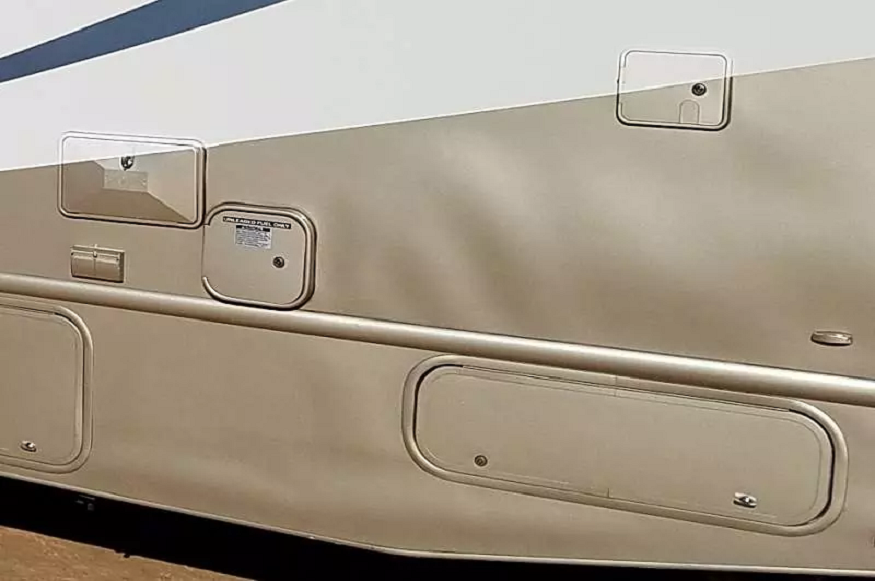Repairing RV Delamination: A Comprehensive Guide

When you invest in an RV, you expect it to serve you well for years, offering both comfort and adventure. However, like any vehicle, RVs are subject to wear and tear, and one common issue that RV owners face is delamination. Delamination in an RV occurs when the layers of the RV’s exterior, typically the fiberglass or aluminum siding, begin to separate from each other. This can be a significant problem, leading to structural damage and affecting the overall integrity of your RV. In this article, we’ll explore the causes of RV delamination, how to identify it, and most importantly, how to repair RV delamination effectively.
Understanding RV Delamination
Delamination is a process where the layers of material that make up the RV’s walls or exterior panels begin to peel apart. The most common cause of delamination is moisture infiltration, which seeps into the layers of the RV and causes them to separate. This can happen due to a variety of factors, including leaks from the roof, windows, doors, or poor sealing during manufacturing or over time.
When moisture enters between the layers, it creates air pockets that expand and eventually cause the adhesive holding the materials together to break down. This process can be slow at first, but over time, it can lead to more extensive damage, making the RV less stable and less energy-efficient. In severe cases, delamination can affect the structural integrity of the RV, leading to costly repairs.
If you suspect that your RV is experiencing delamination, it’s essential to address it as soon as possible to prevent further damage. Knowing how to spot the early signs of RV delamination can help you take action before the problem worsens.
Identifying the Signs of RV Delamination
Identifying delamination early is crucial for preventing further damage and costly repairs. The most obvious sign of delamination is the appearance of bulges, bubbles, or soft spots on the exterior of the RV. These irregularities are often the result of moisture trapped between the layers, causing the surface to swell. You may also notice areas where the fiberglass or aluminum panels appear warped or misaligned.
Another sign to look for is a change in the texture of the RV’s exterior. In some cases, the delamination may cause the surface to become rough or uneven, giving it an unappealing appearance. Additionally, if the RV is older or has experienced significant wear, the presence of water stains or discoloration near seams, windows, or doors can be a sign that moisture has infiltrated the walls and caused delamination.
It’s also important to check the interior of the RV for signs of water damage. If you notice any damp spots, mold, or mildew inside the walls, this could indicate that moisture has penetrated through the exterior and caused delamination. Early detection of these signs can help you address the issue before it leads to more serious structural problems.
Steps to Repair RV Delamination
Once you’ve confirmed that your RV has delamination, the next step is to address the issue promptly. Repairing RV delamination can be a challenging task, but with the right tools, knowledge, and a little patience, it is entirely possible to fix the problem yourself or with the help of professionals.
Step 1: Assess the Extent of the Damage
Before you begin the repair process, it’s essential to assess the extent of the delamination. Start by thoroughly inspecting the exterior and interior of the RV, looking for any signs of moisture damage, warping, or bubbling. If the delamination is minor and localized to a small area, it may be possible to repair it yourself. However, if the damage is extensive, it may be worth consulting a professional for a more complex repair.
For small areas of delamination, you can typically proceed with the repair yourself, while larger areas may require the expertise of a professional RV repair service.
Step 2: Remove the Delaminated Material
Once you’ve assessed the damage, the next step is to remove the delaminated material. This will involve carefully prying away the outer layer of the RV’s exterior, being mindful not to cause further damage to the underlying structure. You may need to use a heat gun or a specialized tool to soften the adhesive and gently lift the panels away from the RV.
It’s important to take your time during this step, as rushing the process can cause additional damage. The goal is to remove the affected material without harming the rest of the RV’s exterior.
Step 3: Clean and Dry the Area
After removing the delaminated material, you’ll need to clean and dry the area thoroughly. This is a critical step, as any residual moisture or debris can interfere with the repair process and prevent the new adhesive from bonding properly. Use a clean cloth to wipe down the area and ensure that it is completely dry before moving on to the next step.
If you find any signs of mold or mildew, it’s important to treat the area with a mold-removing solution to ensure that the issue does not persist.
Step 4: Reattach the Layers
Once the area is clean and dry, the next step is to reattach the delaminated layers. For this step, you will need a high-strength adhesive that is specifically designed for RVs and outdoor use. There are a variety of adhesives available that are suitable for repairing delamination, including construction adhesives and epoxy-based products. It’s important to choose an adhesive that is both durable and weather-resistant to ensure a long-lasting repair.
Apply the adhesive to the affected area, being sure to cover the surface evenly. Once the adhesive is in place, carefully press the layers back together, ensuring that they are aligned correctly. You may need to use clamps or other tools to hold the layers in place while the adhesive cures. Be sure to follow the manufacturer’s instructions regarding curing time, as rushing this process can affect the strength of the bond.
Step 5: Seal and Finish the Repair
After the adhesive has dried and the layers are securely attached, it’s time to seal the repair. Apply a high-quality sealant around the edges of the repair area to prevent any moisture from entering in the future. This will help to ensure that your RV stays protected from water damage and that the delamination does not recur.
Finally, inspect the repaired area for any gaps or imperfections, and make any necessary touch-ups. Once you are satisfied with the repair, the RV should be ready to hit the road again.
Preventing RV Delamination in the Future
Preventing RV delamination is crucial for ensuring the longevity of your vehicle. Regular maintenance and proper care can help prevent moisture infiltration, which is the primary cause of delamination. Start by checking the roof, windows, doors, and seals for any signs of wear or leaks. Repair any issues promptly to prevent moisture from entering the RV.
Additionally, consider applying a protective coating to the exterior of your RV to help keep moisture out and protect the materials from the elements. Regularly clean and inspect your RV to catch any issues early and prevent them from becoming bigger problems.
Final Thoughts on Repairing RV Delamination
Repairing RV delamination can seem like a daunting task, but with the right approach, it is possible to fix the problem and extend the life of your RV. By understanding the signs of delamination, knowing how to repair it, and taking steps to prevent it in the future, you can keep your RV in top condition for years to come. Whether you choose to tackle the repair yourself or seek professional help, addressing delamination promptly will ensure that your RV remains a reliable and enjoyable vehicle for your adventures.






